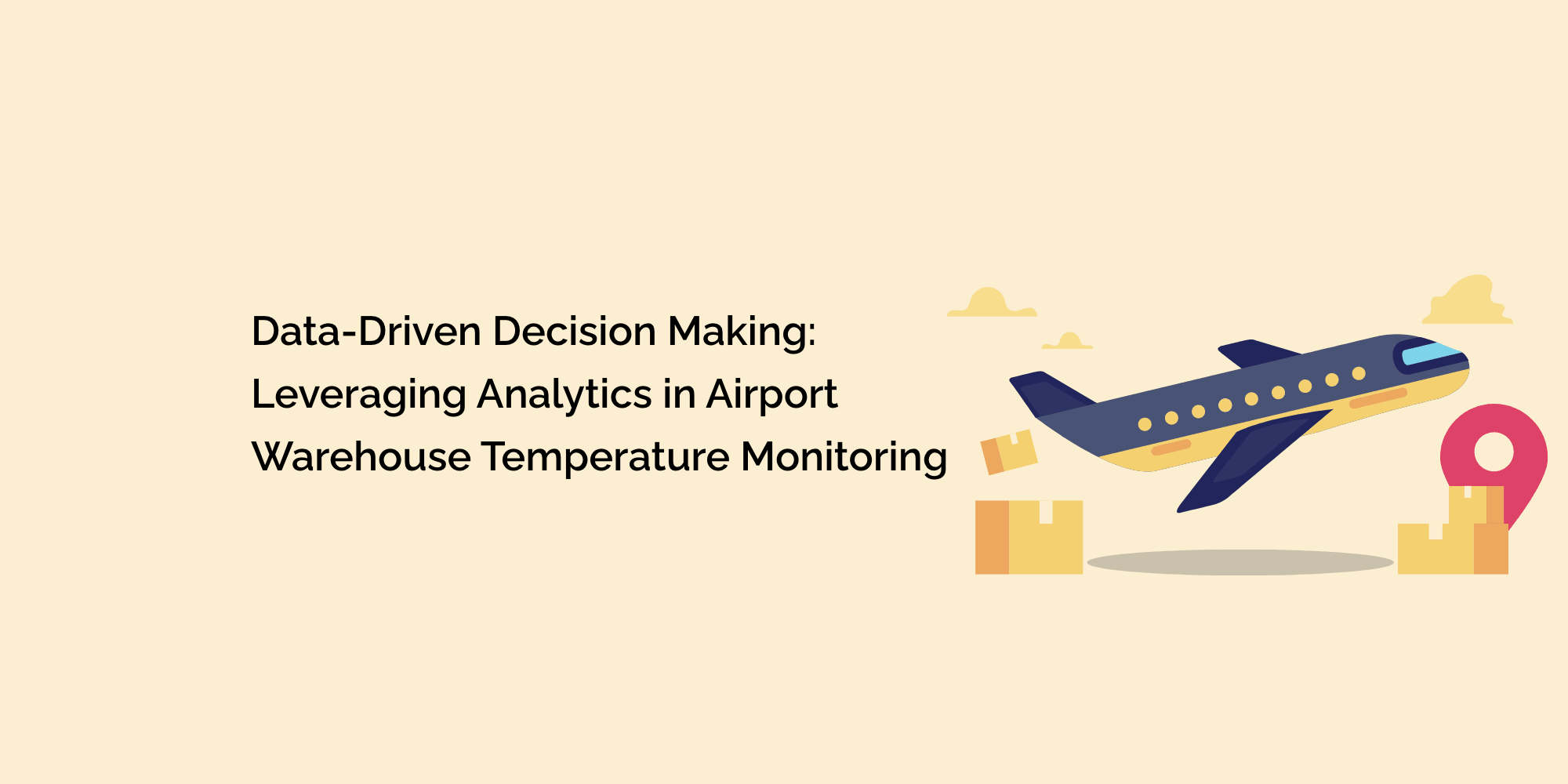In the dynamic world of airport logistics, data has become a valuable asset, providing critical insights into optimizing warehouse operations and ensuring the safe and efficient movement of goods.
In the realm of temperature-sensitive cargo, data-driven decision-making is proving to be a game-changer. Traditional manual temperature monitoring processes are gradually giving way to advanced automated systems that generate vast amounts of real-time data.
Leveraging analytics in airport warehouse temperature monitoring empowers stakeholders with actionable insights, enabling them to proactively address potential risks, streamline operations, and enhance supply chain resilience.
In this blog, we will explore the significance of data-driven decision-making through analytics in airport warehouse temperature monitoring and how it revolutionizes the way temperature-sensitive cargo is handled.
1. The Role of Data in Temperature Monitoring:
Data serves as the foundation for effective temperature monitoring in airport warehouses. This section will delve into the various types of data collected through advanced monitoring systems, including temperature readings, humidity levels, time-stamped records, and location-based information. Understanding the different data sources will set the stage for exploring their applications in making informed decisions.
2. The Power of Analytics in Airport Warehouse Operations:
Analytics in the context of airport warehouses goes beyond just temperature monitoring. This section will discuss the broader applications of analytics in optimizing warehouse operations, such as predictive maintenance, demand forecasting, and inventory management. Highlighting the power of data-driven insights will emphasize the transformative impact analytics can have on warehouse efficiency.
3. Data-Driven Decision-Making:
Data-driven decision-making is a process that relies on analyzing relevant data to guide strategic choices. This section will delve into the key components of data-driven decision-making, including data collection, analysis, visualization, and interpretation. Additionally, it will explore the benefits of adopting this approach in the context of airport warehouse temperature monitoring.
4. The Benefits of Analytics in Temperature Monitoring:
a) Proactive Risk Mitigation: By analyzing historical and real-time data, warehouse operators can proactively identify potential risks to temperature-sensitive cargo and take preventive measures before any damage occurs.
b) Optimized Inventory Management: Data-driven insights aid in optimizing inventory levels, reducing wastage, and ensuring the availability of temperature-sensitive goods when needed.
c) Compliance and Reporting: Analytics simplify the process of compliance with industry regulations, as well as generating comprehensive reports for audits and quality assurance.
d) Predictive Maintenance: Advanced analytics can predict equipment failures, enabling timely maintenance and minimizing downtime, thereby enhancing overall warehouse efficiency.
5. Implementing Analytics in Airport Warehouse Temperature Monitoring:
Integrating analytics into existing temperature monitoring systems requires careful planning and execution. This section will discuss the steps involved in implementing analytics, including data integration, selecting the right analytics tools, and training warehouse staff in utilizing data-driven insights.
6. Data Security and Privacy Considerations:
With the increasing reliance on data, ensuring data security and privacy is paramount. This section will address the potential security risks associated with data-driven decision-making and propose measures to safeguard sensitive information.
7. Case Studies:
To exemplify the impact of data-driven decision-making, this section will present real-life case studies of airports that have successfully leveraged analytics in temperature monitoring. These case studies will showcase tangible improvements achieved in cargo quality, operational efficiency, and overall supply chain performance.
8. The Future of Analytics in Airport Warehouse Temperature Monitoring:
The potential of analytics in temperature monitoring is vast, and the future holds exciting possibilities. This section will explore upcoming trends, such as AI-driven analytics, machine learning algorithms, and integration with the Internet of Things (IoT), and how these developments will further revolutionize warehouse operations.
Conclusion:
Data-driven decision-making through analytics is transforming the landscape of airport warehouse temperature monitoring. By harnessing the power of data, warehouse operators can proactively identify risks, optimize inventory management, ensure compliance, and enhance overall supply chain resilience.
As the industry continues to embrace data-driven insights, airport warehouses are poised to become more efficient, reliable, and customer-centric. Leveraging analytics in temperature monitoring is not only a technological advancement but a strategic imperative for success in the increasingly competitive aviation logistics landscape.








